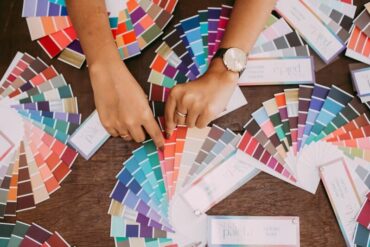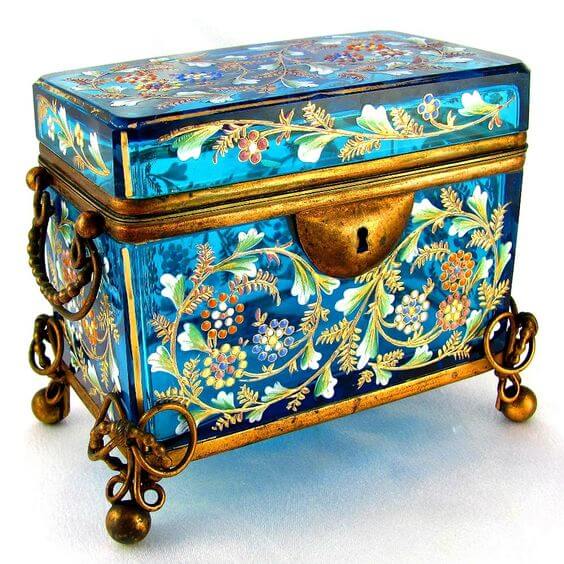Buy These Antiques:
Japanese Antique Makie Lacquer Bento Jubako Set: $1,950.00
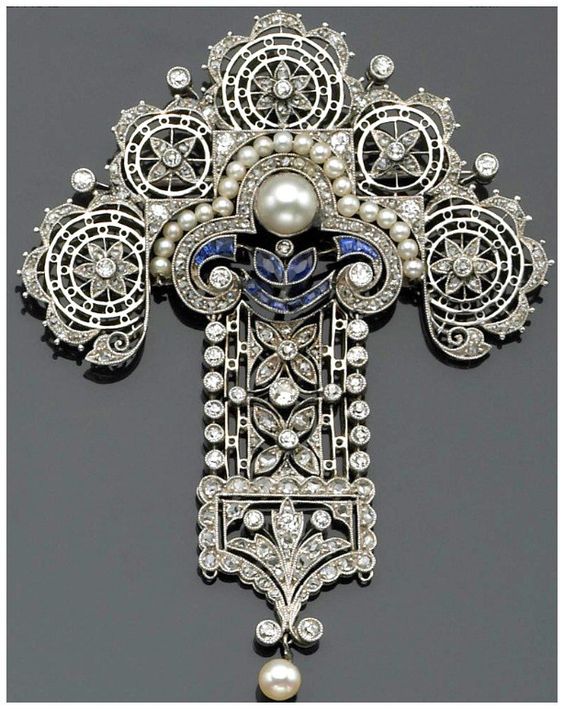
Antiquing can be an enjoyable and stimulating hobby, especially if you appreciate history and want to preserve a part of the past in your home. But in the world of antiques, there are authentics and fakes, and sometimes it is hard to distinguish between the two. If you have a careful eye and a little basic education, you can find some great deals at estate sales, antique shops, flea markets and even second-hand stores. Many antiques can also be purchased through the mail on the Internet. As an initial matter, the term “antique” was originally defined to be anything made before 1830, but it was later changed to anything over 100 years old by U.S. Customs. The hundred-year-old criteria became a common standard to define something like an antique. Most antique shops and antique shows, as well as high-end antique dealers, today typically feature a significant amount of inventory made in the 20th century. Sellers consider the design, workmanship and rarity to define what “modern” pieces are appropriate for an antique shop. Examples of items in this category include pottery, glass, jewelry from the turn of the century through the 1940’s. Tiffany silver was also produced in this century.
Early goods and antiques should be distinguished from collectibles. The term “collectibles” is used to refer to more recent items, often associated with “popular” culture. Items were part of everyday life in a bygone era are now fondly remembered. There are thousands of categories, but some examples include fountain pens, children’s lunch boxes, old movie posters and comics books which are items that are manufactured and marketed specifically as collectibles. These include collector’s plates and Franklin Mint dolls. There are millions of collectors throughout the world, from all walks of life; multimillionaires that collect the Impressionist paintings to children who might collect anything you can imagine. There is a saying in the antiques and collectibles field that having more than one of anything is a collection.
Getting started in antiquing and collecting is easy. You can just dive in by browsing online, attending antique fairs, visiting antique shops, and flea markets. Take some time and discover what appeals to you or strikes a chord of nostalgia. Alternatively, you can study up hundreds of books on antiques and collectibles available, offering basic surveys of the field to very specialized studies of a narrow area. Some books are price guides and give you an idea of what you can expect to pay for specific antique and some books provide a great deal of information about arts and their identification. Both types of books serve an important role in a collector’s library.

Savvy Tips From a Flea-Market Junkie
If you love a treasure hunt, then shopping at flea markets, garage sales, thrift stores, and antique shows may be the challenge you seek. Knowing how to maneuver your way through consignments, changing prices and haggling, however, may take a little practice even for the ready and willing shopper. Remember that shopping at used furniture stores, county fairs and the like is quite different from browsing the sale rack at Bloomingdales. The items offered may not come with money-back guarantees or easy exchanges, and many items are not always as represented. You will not find several quantities of the same item to compare sizes, color or whatnot, and it may take some investigation to learn the actual origins and condition of your purchase. Thus, we offer a few practical tips for beginners, as you get started down the exciting trail of bargain hunting.
First, educate yourself on your items of interest. For example, if you want to begin collecting Depression glass, check out a few books from you local library and begin to familiarize yourself with the patterns that are available and the market price for pieces. Know how to spot a reproduction. There are usually tell-tale signs of repros: things like color, the slight variation of pattern, etc.
Wear comfortable shoes, dress in layers and carry a bottle of water with you. Didn’t we mention antiquing is a competitive sport? Seriously, if you are spending the day scouring a large flea market or antique show, the weather may change from morning to afternoon, and although you may be able to stave off your hunger, you should keep yourself well hydrated.
Consider bringing a set of “tools” with you. These may include an antique guidebook with prices (such as Kovel’s Antiques and Collectibles Price List), a small notebook, tape measure, magnifying glass, metal polish, and camera. Don’t feel shy opening up a book and checking on the price of an item. It will show the dealer that you are an educated buyer that won’t be taken at a low price. Use the notebook to jot down items you may be interested in any important specs so that you can review later. If you are at a flea market, it is smart to put down the location of the stand or table where your item of interest is located. A tape measure can be handy especially if you find a piece of furniture that you aren’t sure will fit in that little space in your home. Use a magnifying glass on glassware and another object to look for chips, flea bites and other imperfection. Ask before taking out your metal polish, but most sellers won’t mind if you try and see what is underneath all that tarnish. And finally, bring a camera if you plan on returning and want to sleep on a decision or ask for advice (or permission!) from your spouse or family. If you are planning on purchasing and moving furniture, make sure you also come prepared with rope, padding and anything else you may need to protect your find from the show to your home.
Bring cash and show it when you are serious about buying. Many flea markets and antique shows take cash only or prefer to deal with cash-paying customers. If you decide to go down on the marked price of an item, first make sure you are serious about it before you try and haggle the price down. It is a good idea to decide before starting how much you want to pay for the item and that you can walk away if the price isn’t met. Don’t go so low on the price that you insult a dealer, so make sure you know a fair market price on your find. Then, feel free to take out your cash as you suggest a price, saying something like, “I’m ready to give you $20 for the set.” It shows the dealer that you are serious about purchasing and not just trying to play mind games.
Shop with an eye for what you love. Most people have a sense of their style although they may not be able to put it into words. But when you see something you love, you know it. Don’t just buy something because it would “go” with the rest of your living room, but because you like it and if the rest of your living room didn’t match, you would still find a place for it. It is a good rule of thumb for many purchases, because people often go through “style phases,” sometimes quite drastic, throughout their lives, but if you find a piece that you love, you will incorporate it into any decor.
Know your limitations. For example, you may love that little wing chair you found but don’t have a clue about reupholstering furniture. Make sure you factor in the cost of refinishing, re-upholstering, and altering any piece that you want to purchase if you don’t know how to do it on your own. When you add up all the costs, the little wing chair that was a bargain at $50 may be a bit more than you can afford.
Collecting Victorian Glassware: Reproduction or Antique?
In this article, we look at one of the most enduring, popular collectibles: glassware. It is often hard to distinguish between antique glass and reproductions from antique molds. Even Depression glass, not yet a century old, is already being reproduced en masse for antique lovers. Reproductions are usually much less expensive than their original counterparts and are appropriate for practical use rather than simple display items on a shelf. If you are planning to purchase vintage style glassware, you need to know what exactly to buy so won’t be duped into paying top dollar for an item that you assume is the real thing. The following are a few important hints to keep in mind when looking at collectible glass.
Know your pattern. If you are collecting a certain pattern, make sure that you know which pieces have been reproduced. In general, manufacturers of reproduction glass do not reproduce the entire set of original pieces. Also, reproduced items are often in colors that are slightly different from their original shades. The more you know about the original set and the reproductions, the better you will be able to distinguish them. Finally, a word of caution: Although there are extremely knowledgeable antique dealers, there are also many store owners who do not specialize in glass. Therefore, don’t count on your antique dealer to discern whether their amethyst glass Dahlia pitcher (featured at right) is the original Dugan or the L.G. Wright reproduction. Always do your research first.
Look for distinguishing marks. Glassmakers imprint their trademarks on their pieces, and if you can distinguish which glassmaker has produced the piece, you may be able to tell if you are buying a reproduction or an original antique. Many glassmakers’ trademarks have also evolved over time, so you can often estimate a ballpark period when the item was manufactured.
Ask questions. Although this point seems basic and sellers may not be glass experts, they may be able to give you clues as to where the glass came from. Did it come from an estate? Was any restoration done to the piece? Was the condition flawless? Thoughtful questions may not provide a conclusive answer as to whether the item is an antique versus a reproduction, but may offer you insights that will lead you to the right determination.
Finally, consult other sources. There are many good books and guides available that can give you a well-rounded understanding of antiques and their counterpart reproductions. Alternatively, when all else fails, you may want to bring the piece in for an appraisal. Find a reputable appraiser who specializes in glass, and he or she should be able to give you a reasonable estimate of the item’s age and where it came from.
Collecting Transferware: A Brief History, Tips, and Patterns
The resurgence of the French antique and the Shabby Chic trend has brought transferware back into the forefront of home decorating again! Although transferware refers to a style of collectible ceramics, the two are quite similar and are often seen paired together. For example, a kitchen wall featuring a collection of transferware plates is often complemented by toile window treatments or wallpaper. Also, toile and transferware patterns have cropped up in the most unusual places, on clocks, desk accessories, and even pet bowls! But let’s begin with a bit of history.
A Brief History of Transferware
“English transferware” refers to ceramics such as china, ironstone, etc. which has been glazed using a particular decorative treatment. They were traditionally produced in Staffordshire, England. The transfer printing method was developed by John Sadler and Guy Green of Liverpool in 1756.
The plate is inked and the pattern transferred to a special tissue. The process uses copper plates on which a pattern or design is etched. The inked tissue is laid onto a bisque-fired ceramic item, which is then glazed and fired. Patterns are transferred to the ceramic items after glazing, but the ink often wore off. These are the areas where the patterns don’t quite match. If you look closely, you can often see where the transfer design ends.
The transfer printing process caught on quickly was later adopted by Josiah Wedgwood to create his famous, ivory based “Creamware”. Before the development of transfer printing, only the most affluent English families could afford complete dinnerware sets, because every dish was carefully handpainted by an artisan and thus, very expensive. Transfer printing allowed hundreds of sets of plate ware to be produced at a fraction of the time and cost of their handpainted counterparts. Later, technology was developed to allow double or triple color transfers. The first patterns were inspired by the Orient, often featuring pagodas; Cobalt Blue pieces exported from China were favorites among the Victorians in particular, perhaps to designate wealth as only the affluent could afford to travel to the East. Commemorative wares were depicting scenes of historical significance, like royal coronations or the launching of ships, were also popular. Pastoral themes featured scenes of rural life, farming, cattle, and animals. Today, the most identifiable transferware patterns are French-inspired and romantic, often featuring a woman in a long dress with a parasol, with a young suitor by her side, placed in a garden or gazebo.
Decorating with Transferware
Transferware (especially paired with toile fabrics) make beautiful accent pieces for your kitchen. Remember always to group similar items together based on color or theme. Try hanging a collection of various black and white transferware plates, for example, on a plain wall using plate hangers adorned with black satin ribbons. Or group traditional blue transferware plates on a blank wall, and then accent with transferware pitchers and other pieces arranged below. Or dress up a countertop or niche above your cupboards by displaying a transferware vase, China or gravy boat, paired with a few plates. For your kitchen table, try presenting a single transferware pitcher filled with fresh flowers as a centerpiece, and then complement the look with toile placemats in the same color scheme.
You can also use toile and transferware in other areas of the home. A transferware milk jug is a perfect vase for flowers on a bedside table or bath, and toile makes a stunning, Shabby Chic statement as a bedspread or slipcover material. Use toile on upholstered furniture for a regal yet casual look. Toile has a special quality about it that expresses elegance without being too formal or fancy. You can always feel free to mix toile with items from a thrift shop or a flea market. Wherever your creativity takes you, toile and transferware will undoubtedly add a peaceful, pastoral feel to any room of your house.
Shining Your Silver Spoon: Cleaning and Caring for Antique Silver
There is something regal about the shine of antique silver, and when cared for properly, silver pieces can be kept for generations. And in fact, treasures made of precious silver have a long history. Excavations in the ancient Sumerian city of Ur have unearthed silver jewelry pieces. Silver was mined around Anatolia that is today’s modern day Turkey, and the Chaldeans were the first cultures to extract silver from other ores around 2500 B.C. By 1000 B.C., the cultures of South and North America were using advanced silversmithing techniques. Mining continued throughout the ancient times, and the popularity of silver spread throughout Asia, from China to Korea and then to Japan. In 600 A.D., silver became vital in China during the T’ang dynasty. Later, in the Sung Dynasty, the Chinese perfected the Repousse technique (a method of pushing out sculptural forms from within the silver vessel and then defining them further with exterior chasing). Spanish mines began to be important sources of silver around this time, as well as those in Eastern Europe. By the 16th century, European conquerors began exploiting New World silver, particularly for the benefit of royals back home. By the 1800s, silver jewelry became more affordable because of advances in technology. Electroplating was invented. Tiffany & Company began producing silverware in New York in the mid-1850s. In England, Queen Victoria began the revival of ancient Celtic motifs in silver jewelry design, and the fashion trend lasted until her death in 1901.
The major drawback with silver is its seemingly speedy ability to tarnish and as a result, some people shy away from the daunting task of polishing and restoring silver to its original brilliance. Silver tarnishes when exposed to air and certain chemicals, like sulfur. Tarnish begins as a yellowish hue which darkens to a brown and eventually to a purplish black color. It is easiest to remove tarnish in its early stages, but when it becomes dark over time, it can be tough to remove. It is important that you care for, properly store and regularly clean your silver pieces.
First, always store your silver pieces wrapped in tissue paper and plastic bags. Try to store your pieces in a dry place, free from humidity. You should also prevent silver from coming into contact with rubber products like placemats and rubber gloves, especially for an extended period, as the sulfur in these products causes silver to corrode. Also, do not store or wash silver and stainless steel flatware together. Contact between the two metals causes silver to stain. When using your silver pieces, whether it is flatware, platters or holloware, be sure not to let food remain on the pieces for very long. Some foods contain sulfur (eggs and mayonnaise in particular) and should not be kept with silver for extended periods of time. Wash your silver with warm water and soap, and dry immediately. Do not put your silverware and silver pieces in the dishwasher, or allow them to soak in water.
Silver needs to be polished periodically. If you do this, it will prevent you from having to spend inordinate amounts of time removing tarnish buildup. Polishing silver and removing tarnish usually involves using a cream or silver cleaning liquid, which is somewhat abrasive of silver, which is a soft metal to begin with. Using the gentlest method possible is best for maintaining your silver, especially with silverplated items which sometimes have a very thin plating applied to the base metal. If you want to wear gloves when polishing your silver, wear cotton gloves, not rubber ones as rubber gloves contain sulfur. If you are polishing silver for maintenance, and there is little to no tarnish, a quick use of a silver wipe (readily available for purchase at most stores which carry cleaning products) should do the trick. Silver pieces that contain some polish can be cleaned with a silver cream or paste. Use a small amount of silver cream, and using a soft cotton towel, rub the piece in straight strokes. As you rub against the silver tarnish, it removes a little silver with each stroke. It is especially important to remember when polishing silverplated pieces. Don’t overdo polishing your silver. Then use a clean, soft towel to buff and finish the silver.
Liquid silver dips are another method for cleaning and removing tarnish. They are less abrasive that creams and pastes, but they do contain strong chemicals and acids which can cause silver to pit and etch over time. Silver should never be left in a dip for a long time. Also, the acids can damage wood and ivory attachments to silver as well as leak into hollow parts of your piece and continue working on the silver and cause pitting. You can use a silver dip by swabbing it over the surface of the silver and then rinsing it thoroughly.
As a final note, silver dips and creams can be abrasive as well as toxic. Another alternative is to make your own, non-toxic “silver dip,” which uses science to convert tarnish back to silver. When silver combines with sulfur, it produces silver sulfide, also known as tarnish. Polishing silver with a cloth and cream or a liquid dip is a method that attempts to remove tarnish from the surface. The following method converts silver sulfide back into silver and, therefore, does not remove the silver. Aluminum is one metal that is more attracted to sulfur than silver is, so when the two metals are placed together, the sulfur will transfer from silver to aluminum. Here is a simple recipe that you can use:
- Baking soda
- Salt
- Aluminum foil
- Line your sink or a glass pan with aluminum foil.
- Heat water to steaming. Add one tablespoon of baking soda and one tablespoon of salt per quart of water. Pour into glass pan or sink.
- Using tongs, carefully place silver on the pan, making sure it touches the aluminum foil. The tarnish should begin to disappear immediately. You may need to reheat the solution and repeat the process for heavily tarnished pieces.




